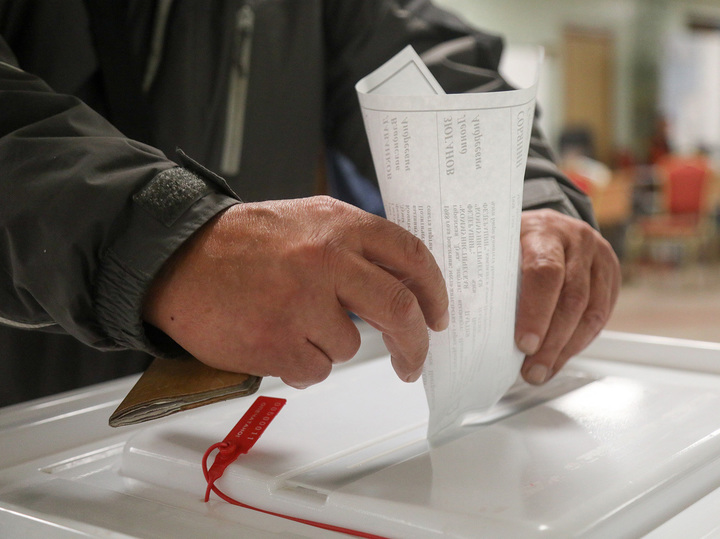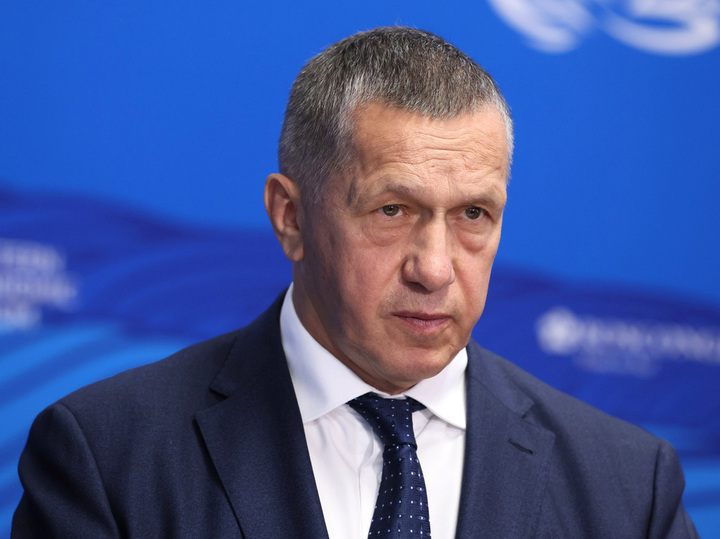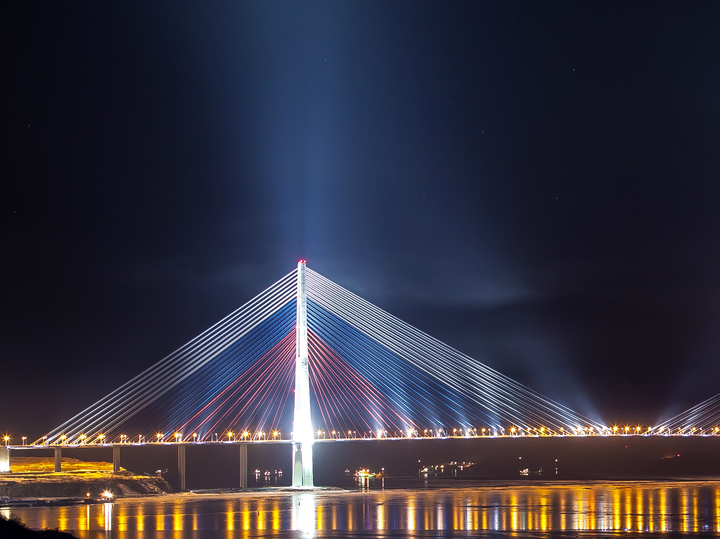Far East: heading towards stability
[ad_1]
The Far East was distinguished by some voting features. 5 out of 11 regions of the Far East also held gubernatorial elections: Primorsky Krai, Magadan and Amur regions, Chukotka Autonomous Okrug and the Republic of Sakha (Yakutia). In three subjects of the Russian Federation included in the Far Eastern Federal District (Yakutia, Transbaikalia and Buryatia), elections of regional parliaments were held, and in Khabarovsk, elections of the mayor were held. The most complex electoral “matryoshka” took shape in Yakutia (simultaneous elections of the head of the republic, regional and city parliaments). In other regions, elections were held at the municipal level. The average turnout in the district was 45.5%.
Voting in the Far East was organized under the strict control of independent public observers. Attempts at provocations, violations and interference by foreign agents in the elections were suppressed promptly.
The activity of supporters of the current governors on the first day of voting was many times higher than that of protest-minded voters. Let us note that for a long time the district was considered one of the generators of the protest agenda, which was formed in virtually all of its regions with the largest population. It was possible to reduce the level of protest and discontent by 2023 thanks to the comprehensive development of the Far East, including large-scale investments in all regions of the Far Eastern Federal District, as well as the introduction of unique social support measures that have already shown effectiveness. These are the “Far Eastern Hectare”, and the “Far Eastern Mortgage”, the Unified Presidential Subsidy and the Far Eastern Airline, master plans for the cities of the Far Eastern Federal District and the “1000 Homesteads” program and much more. Only recently have such iconic facilities been introduced as a cardiovascular center in Yakutsk, one of the most modern in the country, a center for complex coordination sports in Komsomolsk-on-Amur, and a nuclear medicine center in Ulan-Ude. The Palace of Culture in Svobodny has been reconstructed. The “1000 households” program received a good response from people. In fact, in the first year it was possible to create 1,245 landscaped courtyards, and the program continues.

Over all three days of voting, experts note the consolidation of the region’s population. The population fully supports the course of President Vladimir Putin and approves of the activities of Plenipotentiary Representative Yuri Trutnev, who stabilized the political and economic situation in the macroregion, and also very successfully implemented projects that significantly improved life in the Far Eastern Federal District: from business to social affairs. The most advanced and advanced programs and projects are being implemented here, and there are a lot of preferential regimes that do not exist in other districts. One of the most popular programs among people over the past 5 years has been the “Far Eastern Mortgage”. It was the driving force for most of the preferential mortgage programs in the country. 79 thousand families have already received preferential loans and bought apartments. This measure affected the housing market in the Far East. The volume of housing construction doubled in 5 years, which made it possible to contain price increases; the rise in price per square meter in the Far East was one and a half times lower than the national average. More than 120 thousand people are participating in the Far Eastern Hectare program, 23 thousand plots have already been registered as people’s property. On hectares, 40% of people create their own home, 33% engage in agriculture, create farms, small and medium-sized businesses and tourism projects are also popular. Over 5 years, 121 billion rubles have been allocated to support the regions of the Far East. These funds were used to build 17 new hospitals, 16 schools, 41 sports centers, 27 cultural centers, repair roads, and purchase new vehicles.
It is worth noting that literally on September 11, the plenipotentiary representative of the Far Eastern Federal District reported to President Vladimir Putin on the development of the region over the past 10 years. The development of the Far East first turned into a national program, under which 75 federal laws and more than 400 government acts were adopted during this decade, and then into a single, as it is now fashionable to say, ecosystem for the development of the Far Eastern Federal District. “In general, summing up the results of the work, we say that all the measures developed and applied by the government on behalf of the President of the Russian Federation Vladimir Vladimirovich Putin have today affected 5 million residents of the Far East, or 62% of the population (FEFD). We believe that our goal is to improve the lives of not 62%, but 100%, that is, we want our work formats to help every resident of the Far East live,” said Deputy Prime Minister and Plenipotentiary Representative in the Far Eastern Federal District Yuri Trutnev at the presentation of the successes of this decade to the president.
According to Trutnev’s report, 3 thousand new investment projects were launched, 673 enterprises were built, 125 thousand highly paid and highly qualified jobs were created. For example, enterprises in each of the 11 regions of the Far Eastern Federal District are looking for specialists in the field of engineering, technology and technical sciences. The average salary at enterprises in the Advanced Development Territories is 40% higher than the Russian average. In terms of secondary technical education, 900 workshops, 29 vocational education clusters are being created at an accelerated pace, and 208 colleges are supported.

Investment support allowed the Far East to exceed the average Russian growth rate three times – 139% to 113%.
During the elections, the main trend of stability and development of the region was supported and continued. It can be noted that, in general, stable but manageable competitive election campaigns took place in the regions of the Far Eastern Federal District.
The most active competition was recorded in Yakutia, where the elections of the head of the republic, as well as Il Tumen and the city duma, took place directly. The current head, Aisen Nikolaev, has a good rating, and there were no serious opponents as such, but opponents at the level of the other elections are the most active in the entire Far East. The headliners of the systemic opposition were “New People”. The party’s rating in the region is small, and yet they were able to take second place and gain seats in the regional parliament.
A special campaign took place in Chukotka, where the favorite for the post of governor was considered the “newcomer” Vladislav Kuznetsov, who eventually won the elections, and had “combat” managerial experience in the LPR authorities. Competition for him was created by the LDPR candidate Yulia Butakova, who from the very beginning relied on the support of voters in the capital of the Chukotka Autonomous Okrug, Anadyr, which already happened in the last elections.
The current election campaign in the Far East was distinguished by a shift in emphasis: candidates from United Russia abandoned political games in favor of the current agenda in solving the pressing problems of residents. The final turnout for the elections in the Amur region exceeded the 2018 figures by almost 7.5% and amounted to 38.74%, the regional government reports. The highest turnout in the gubernatorial campaign was in the Chukotka Autonomous Okrug, where the figures were 53.4 percent. It broke all records among the regions of the Far Eastern Federal District of the Jewish Autonomous Okrug, where the turnout in municipal elections was 75.38%.
Also, we should not forget the fact that the legitimacy of the elections in all regions of the Far East was ensured by the participation of a wide range of opposition candidates and their demonstrated position in the public sphere. The bet on comprehensive party, public and digital control worked: a record low number of violations was recorded in the Far East. The elections took place without scandals. There were more than 15 thousand observers in the Far Eastern Federal District, or 7% of the total number of observers in Russia (which is higher than the share of the population of the Far Eastern Federal District, which is 5.5% of the country’s population). The largest number of observers was concentrated in Yakutia. In the Far Eastern Federal District, for the first time, cyber volunteers worked at the EDC on a voluntary basis, identifying and helping to identify and repel about 20 information attacks from abroad – attempts to massively sow disinformation and calls to boycott elections.
The electorate of the parliamentary opposition largely flowed to United Russia and its candidates at all levels (the effect of “consolidation around the flag”), while the opposition parties themselves were unable to offer the voter anything in the new system of political coordinates that would fundamentally distinguish them from United Russia. The destructive opposition and Western agents of influence have lost their social base in the Far Eastern Federal District.

Traditionally, preliminary voting results in the regions of the Far Eastern Federal District set the tone for the entire country. The victory of United Russia candidates in the Far East set the general federal trend.
Experts shared the results of monitoring the past elections. Already based on the results of the first days of voting, the Far East demonstrated a high voter turnout, political scientist Alexey Nechaev expressed confidence.
“From the first days of the elections, exit polls showed a high degree of support for candidates from United Russia who are implementing the policies of Vladimir Putin. This is logical, because voters in the Far East have consolidated around the figure of the president, his desire to protect national interests in the international arena, as well as around the idea of an economic turn to the East,” the expert explained. According to him, the positive socio-economic changes of the past ten years are also obvious to local residents.
“These results are significant, especially in the social sphere. Therefore, the share of the protest electorate is decreasing. The authorities are implementing the residents’ request for a progressive increase in well-being. This also includes the development of infrastructure, support for small and medium-sized businesses, attracting investments, improving the quality of healthcare systems, education and, most importantly, their wide availability,” concluded Nechaev.
Viktor Poturemsky, director of political analysis at the Institute of Social Marketing (INSOMAR), noted that the elections in the Far Eastern Federal District were held differently than in the whole country.
“This is due to the fact that the Far East began to lose its glory as a protest macro-region not this year. This began much earlier – thanks to the effective work of the regional authorities, including the embassy, which is, in my opinion, one of the strongest embassies in Russia now. If we talk about this year’s election campaign, then, of course, there are some specifics. The main request, on the one hand, is a request for stability, for security, for the stability of the system, for the effectiveness of government. On the other hand, it affects the mood of voters. I may say such an unusual and strange thing, but 2023 is the year of competent customers for the authorities in the role of voters,” the expert noted.
As part of the completed Eastern Economic Forum, which took place on the campus of the Far Eastern Federal University on Russky Island, President Vladimir Putin called the rapid development of the Far East “an absolute priority for the entire 21st century.”
He added that the Far Eastern Federal District occupies 40% of the territory of the entire country. “Here are almost half of our forests and gold reserves, more than 70 percent of fish, diamonds, over 30% of titanium, copper, and so on. The most important strategic enterprises, seaports and railways operate. In a word, the role of the Far East for our country, for its future, for Russia’s position in a multipolar world is exceptionally great,” the president emphasized.
During the forum, an agreement was officially signed on the implementation of investment projects in the region with a total value of more than 1 trillion rubles. Today, the dynamics of investment in the Far East is 3 times faster than the all-Russian figure. Projects in the energy sector, IT industry, growing trade turnover with Asia are also the development of the huge Far East region, which is becoming more and more attractive to investors every year.
Presidential Envoy Trutnev emphasized at one of the WEF sessions that the authorities intend to improve the lives of every Far Easterner.
[ad_2]
Source link






